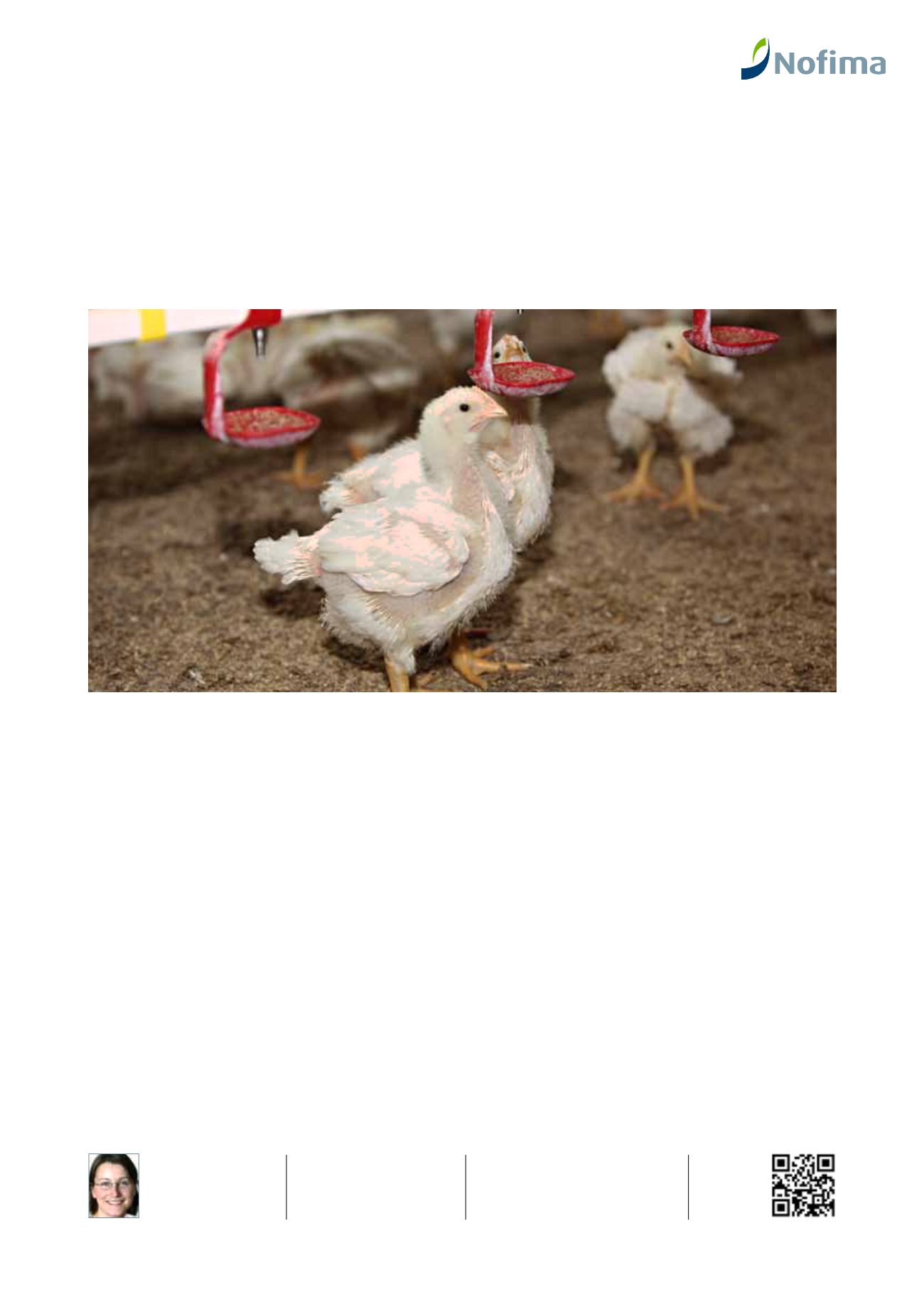
nofima.no
Creating value
2013
23
Financed by:
The Research Council of Norway, the
Foundation for Research Levy on Agricul-
tural Products, funds from the Agricul-
tural Agreement and Animalia Fjørfe
Partners:
The Norwegian Veterinary Insti-
tute, the Norwegian University
of Life Sciences, Nortura and
Animalia Fjørfe
Once Campylobacter jejuni comes into the chicken house, it can spread to the entire flock within a few days.
photo: Grethe Ringdal, Animalia
Campylobacter jejuni is the most common pathogenic
bacteria from chicken and is the main cause of bacterial
diarrhoea in western countries.
The bacteria are found in the chicken intestine and
can be transferred to the meat during slaughtering. It
does not reduce the chicken’s health but, as the bacte-
ria survives well in non-processed poultry products, is a
major problem for the poultry industry.
“Strict hygiene barriers in the traffic of people and
equipment are an important tool, but we also need
strategies to reduce or eliminate the bacteria from the
chickens once they are infected,” says Research Scientist
Birgitte Moen.
Along with other food safety scientists, she has inves-
tigated whether feed can make chickens more resistant
to C. jejuni. More coarsely ground feed, the addition of
certain organic acids and feeding at specified times all
reduce the risk of infection.
Using the chicken’s own barriers:
Chickens have
several natural barriers against bacteria in the upper
part of their digestive tracts. Here we find the crop, with
its lactic acid bacteria, and gizzard, which performs the
chewing function. The feed goes straight through the
oesophagus and into the crop, where it is moistened.
The feed is then “chewed” down to a suitable size in the
gizzard. Chickens that eat whole grains get a larger and
better developed gizzard, providing better protection
against bacterial infection.
The barrier function of the crop can be improved by
adding organic acids to the feed and by giving the chick-
ens access to feed at specific times of the day, instead of
continuous access.
“Our trials have shown that when both formic acid
and potassium sorbate are added to the feed, the inci-
dence of C. jejuni in the chicken intestine is reduced. It is
the combination that gives a very positive effect. Adding
only one of the organic acids has very little effect,”
Birgitte Moen concludes.
More coarsely ground feed for chickens and feeding at specified times
can reduce the risk of bacterial infection.
Whole grain diets combat bacteria


